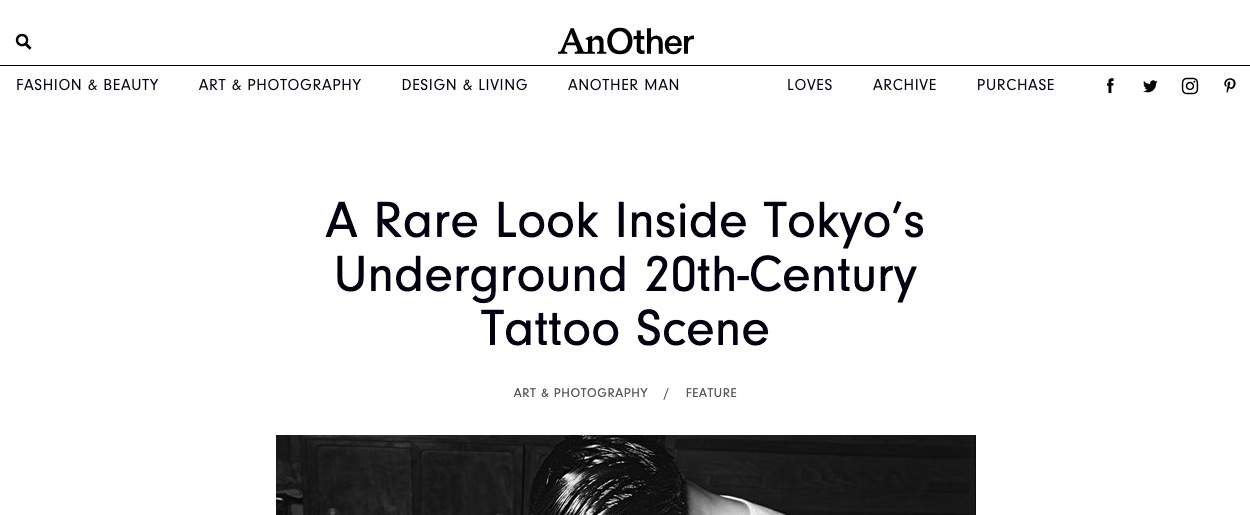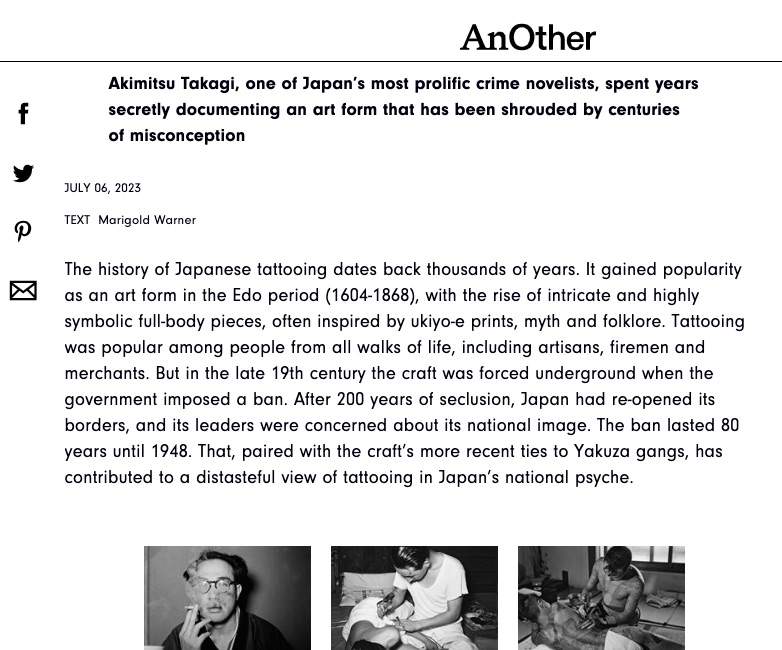The British magazine AnOther, dedicated to contemporary artistic creation devotes an article to the book the tattoo writer.
Last June, during a trip to the Japanese capital, I met the author of the article, Marigold Warner. During our conversation, which lasted almost an hour, the British journalist talked about the genesis of the project, the discovery of the photographs, the research and the publication of the book.
Tattooing and discrimination
Interested in social issues and how they are dealt with through photography, Ms Warner was struck by the extremely negative image still associated with tattooing in the archipelago. She was outraged by the discrimination suffered by tattoo enthusiasts, who are banned from entering onsens and certain beaches. This is due to the almost systematic association that is still made between tattooing and the yakuza, the Japanese gangsters.
An unloved culture
It has to be said that the situation is paradoxical. Japan is the birthplace of one of the most beautiful forms of figurative tattooing in the world. A popular art form in the 19th century, irezumi / horimono, as traditional Japanese tattooing is known, was inspired by Japanese ukiyo-e prints. It enjoyed its golden age before being banned and becoming the preserve of outlaws, earning it a bad reputation. Today, this culture is known the world over. Celebrated for its intricate compositions and rich iconography, enthusiasts cover their bodies with motifs from Japanese history, religion and folklore. The artistic value of irezumi is recognised everywhere. Just as Akimitsu Takagi did in his day.
Read the article on the AnOther magazine website.


